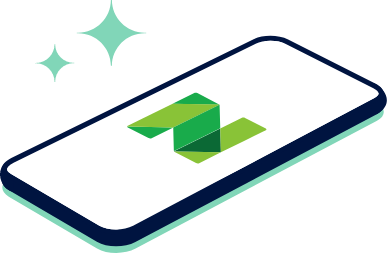What College Students Need to Know About Payment Apps
Apps like Venmo, PayPal and Cash App make sending money easy, but the convenience can leave senders vulnerable to fraud and overspending.

Many, or all, of the products featured on this page are from our advertising partners who compensate us when you take certain actions on our website or click to take an action on their website. However, this does not influence our evaluations. Our opinions are our own. Here is a list of our partners and here's how we make money.
For college students, sending money to friends has never been easier thanks to peer-to-peer payment apps like Venmo, PayPal and Cash App. But that convenience poses risks, including vulnerability to errors, fraud and the tendency to overspend.
As a result, payment apps can contribute to financial stress at a time when young people are learning how to manage their finances on their own. “Peer-to-peer payment apps are cash on steroids because they’re a straw stuck into your bank account,” says Anne Lester, author of “Your Best Financial Life.”
Not only does that make spending easier and more “frictionless,” Lester explains, but it also means “if you trust the wrong person, then you’re in big trouble,” because it can be difficult or impossible to get the money back.
To keep young people safe while using payment apps, money experts suggest taking these extra steps to guard against scams and overspending.
Triple-check the recipient
One risk with peer-to-peer payment apps is sending the money to the wrong person by accident. “If you send money, make sure you are 100% certain you are sending it to the right person, because it’s very hard to get the money back,” says Nilton Porto, associate professor of consumer finance at the University of Rhode Island.
For college students living on tight budgets, Porto says, an incorrect payment could really impact their ability to pay for essentials like rent and food, even if they eventually get the funds returned.
Stress less. Track more.
See the full picture: savings, debt, investments and more. Smarter money moves start in our app.
Protect against fraud
Porto suggests being wary of unexpected requests, even those purportedly from a roommate, that claim to be urgent. “We don’t need to send money to almost anybody right away,” he says, explaining that scam artists often use urgency as a way to trick people into sending cash to them. Similarly, disregard any requests received through one of the apps containing a link that requests personal information, as it could also be a scam.
Erin Lowry, author of the “Broke Millennial Workbook,” warns against downloading any unfamiliar payment apps. “I would not be an early adopter to a payment app,” she cautions, given that it has access to your bank account.
As an additional precaution, Lowry suggests connecting payment apps to a bank account that you don’t keep the bulk of your money in. “My payment apps are connected to a bank account that’s not my primary account, so if something were to happen, it’s a low risk,” she says.
Update your privacy settings
“Default privacy settings are usually public,” notes Amanda Christensen, an accredited financial counselor and extension professor at Utah State University. That means a young adult’s payments to friends or funds received for a job could be visible to the public.
“The social part of the payment apps is where we get some of the best scammers out there because they can see what’s being regularly paid for,” Christensen says. To adjust who can see your activity in Venmo, for example, go into “settings” on the app and scroll to find the various “privacy” options, such as public, friends or private.
Earn a return elsewhere
Christensen suggests establishing a habit of transferring any balance out of payment apps once a week. “Set a note in your phone,” she says, cautioning against treating the app like a checking account, where you let money sit.
Not only is cash sitting in an app vulnerable to fraud, but it also doesn’t earn a return like it could in a savings account. Jake Cousineau, author of “How to Adult” and a high school teacher, says he sees many young people receiving payments for side jobs like tutoring through payment apps. Instead of quickly transferring the money into a savings account, they let it linger, which means losing out on interest that would otherwise be accumulating. Payment apps also generally lack the protections from the Federal Deposit Insurance Corp. that come with bank accounts, he adds.
Don’t forget to budget
The convenience of payment apps makes it easy to overspend, Christensen notes. That’s why she suggests turning to cash at times for a week or so. “Reconnect yourself to the pain of spending,” she says.
Cousineau recommends not letting “these apps get in the way of having a detailed budget.” Just because you can easily send a friend $20 with a few taps doesn’t mean you should.
The apps might even be able to help. Porto says you can use the timeline of a payment app to help track your spending. Just as with a credit or debit card, you can scroll through your history to determine what changes you might want to make in the future. “You can see where all the money went, which can be very powerful for college students,” he says.
In other words, leverage the power of these payment apps to help you manage your money, instead of just spending it.
This article was written by NerdWallet and was originally published by The Associated Press.
Stress less. Track more.
See the full picture: savings, debt, investments and more. Smarter money moves start in our app.
Article sources
NerdWallet writers are subject matter authorities who use primary,
trustworthy sources to inform their work, including peer-reviewed
studies, government websites, academic research and interviews with
industry experts. All content is fact-checked for accuracy, timeliness
and relevance. You can learn more about NerdWallet's high
standards for journalism by reading our
editorial guidelines.
Related articles







